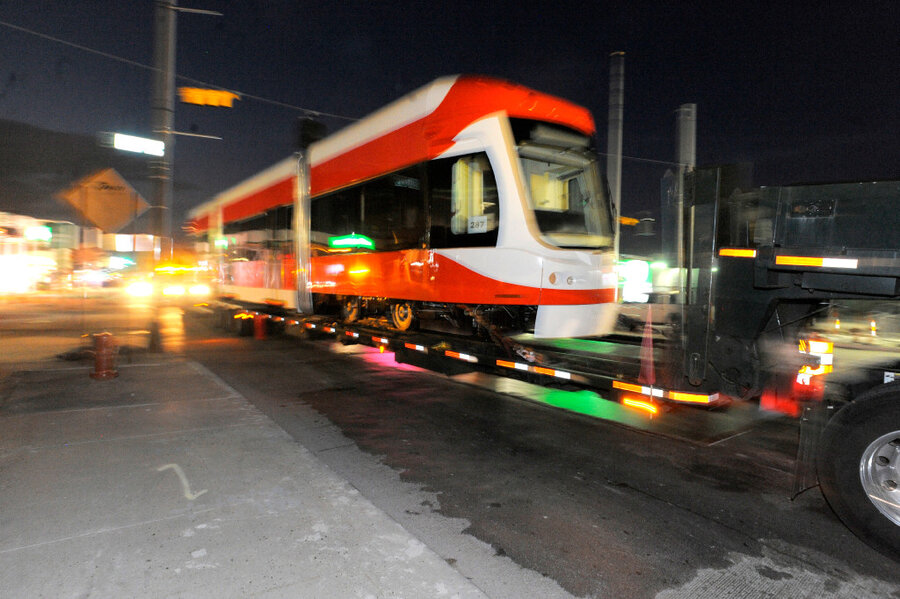That Detroit light on urban revival
Loading...
The once-radiant city of Detroit, which declared bankruptcy only three years ago, held a little-noticed ceremony last month. City and state officials – both Democrats and Republicans – gathered to turn on the last stretch of 65,000 new streetlights. For years, more than 40 percent of Detroit’s neighborhoods were in the dark at night, a result of decades of decline and neglect.
The lighting of all of Motown’s streets is symbolic of what is happening in many old manufacturing cities: an awakening to the fact that urban blight is not a perpetual and dark reality. City life can be made bright again with the right mix of ideas and teamwork. And the simplest ideas often work best, such as being able to walk a well-lit street in the evening, if only to buy a pizza.
Modern technology also helps. Detroit’s new LED streetlights will save about $3 million a year. And residents can use a new smartphone app to report outages. Detroit has also benefited from the help of a few wealthy foundations, a new mayor with vision, and big companies such as JPMorgan Chase that see cities as the future.
Detroit missed out on much of the urban revival in the United States that began in the 1970s. Yet ever since its 2013 bankruptcy – the largest in US municipal history – it has raced to turn itself around. The city’s population may even be growing after decades of decline. Officials also hope to make Detroit a center for advances in driverless vehicles.
The streetlight ceremony was a telling accomplishment in restoring trust between the city’s 688,000 residents and their elected leaders. It also symbolizes the need to reach all residents, especially in the poorest neighborhoods, and not only the hip core in the trendy downtown. The city’s schools are also still struggling despite many attempts at reform. The light of progress must shine everywhere.
Detroit’s steady if difficult revival could serve as a touchstone for Washington. Both Democrats and Republicans in Congress are talking about a bipartisan push to spend big on the nation’s infrastructure to spur innovation, especially in cities left behind by automation and trade. Other post-industrial-age cities such as Pittsburgh and Boston are certainly models of urban revival. But for coming out of a very dark place, the former carmaking capital of America offers a new light.





